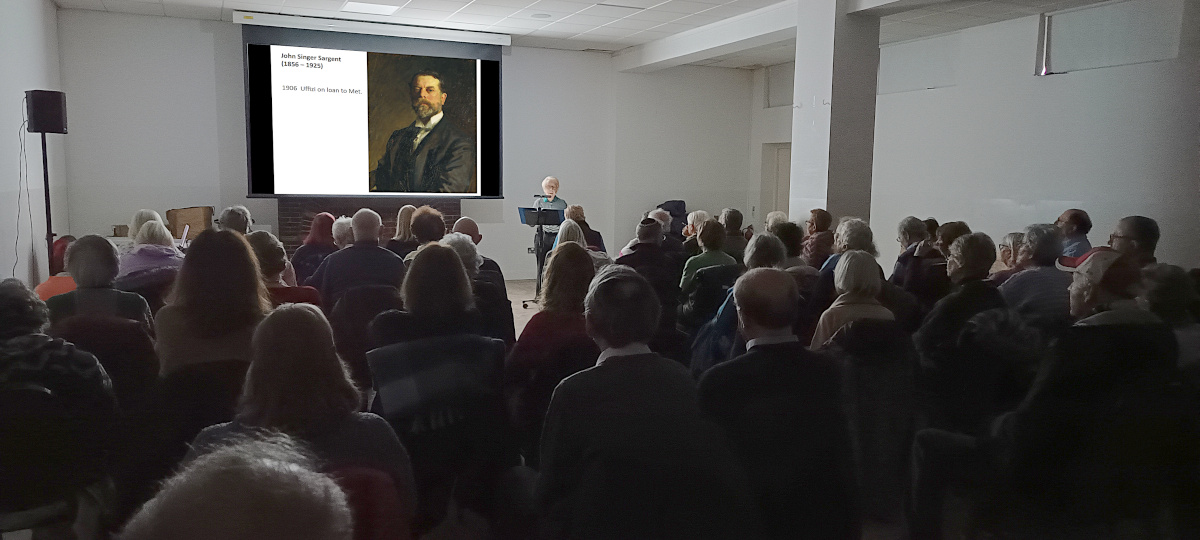Our programme of lectures on Art in London Galleries with Jennifer continued on Friday 09 February 2024 with some surprises along the way. This week we started with a brief history of the National Portrait Gallery and the movements in location of the Gallery from its founding in 1854, until it arrived in its present location in 1896. Still, even at its new location next to the National Gallery, its front entrance has moved from time to time.
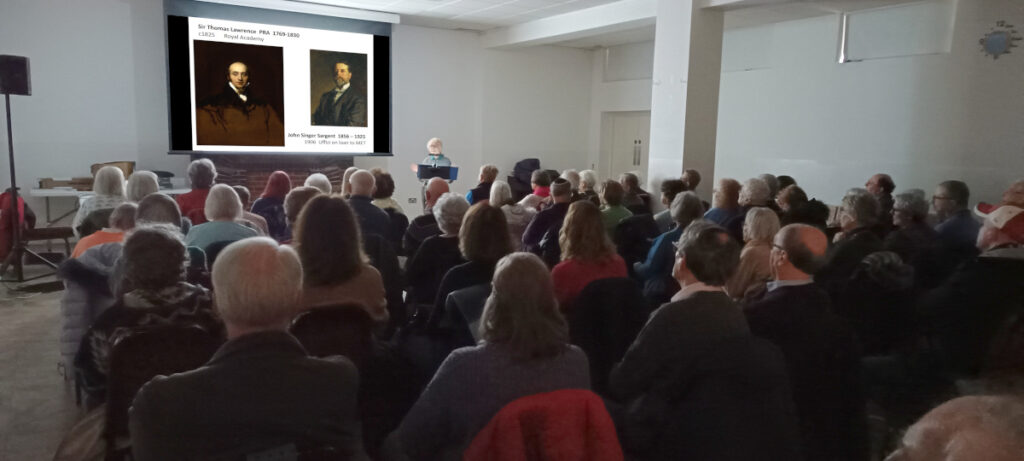
We started then with a comparison between the artists Sir Thomas Lawrence PRA (left) and John Singer Sargent (right). Lawrence (1769-1830) was born in Bristol but early in his life his family moved to Devises in Wiltshire. His father was a publican, but Thomas was able to earn money doing sketches and drawings in the pub from an early age. As an artist, he was largely self-taught, but on moving to London his talent was recognised, and by age 20 he had exhibited at the Royal Academy. We were told that he never married, although he had many lady friends, and was frequently in debt!
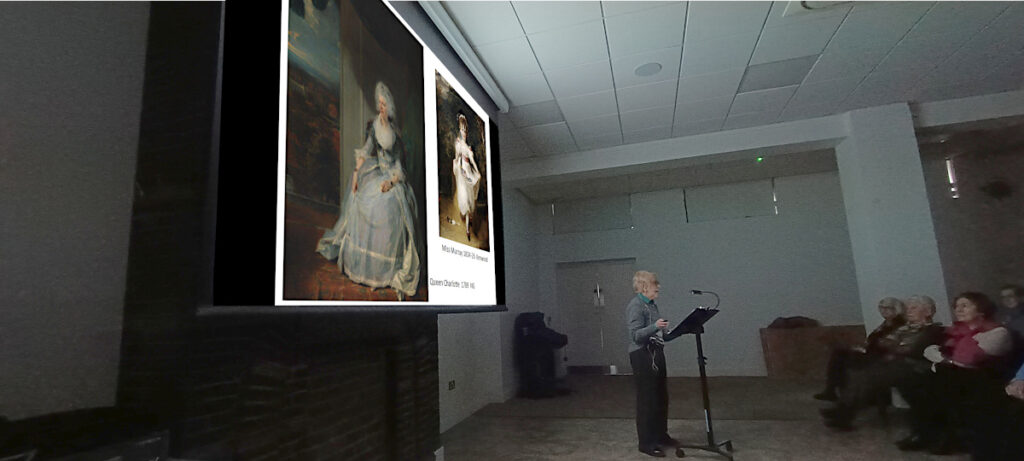
Amongst Lawrence’s best known sitters were Queen Charlotte (above left) and Little Miss Murray (above right), and Jennifer took us through the events of 1814, the year of the abdication of Napoleon, and the paintings of that year in the Waterloo Chamber of Windsor Castle (below).
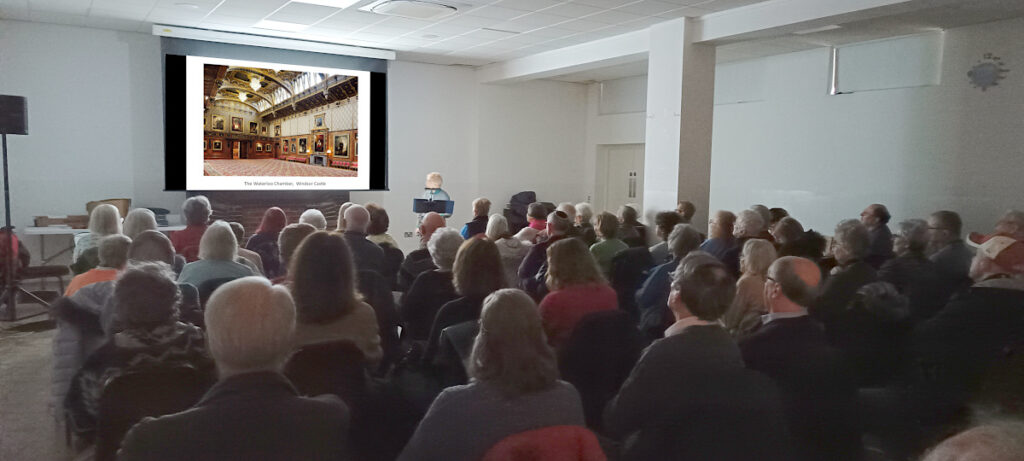
Subjects we were introduced to included The Duke of Wellington, Field Marshall von Bluchner, Tsar Alexander I of Russia, Emperor Francis I of Austria, Nesselrode, Metternich, and many others who were in Paris following Napoleon’s 1814 abdication. (Napoleon returned from Elba the following year for the battle of Waterloo in June 1815.) Sir Thomas Lawrence was a popular artist, and well known for ‘flattering’ the look of his subjects.
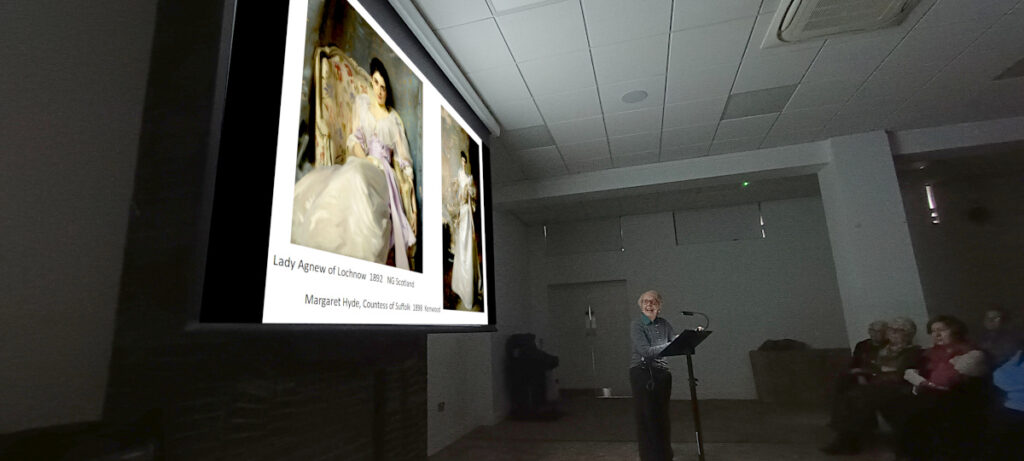
John Singer Sargent (1856-1925, see top image) by comparison was an American rather than British and came from a wealthy family. He was born in Florence whilst his family were travelling in Europe. He showed outstanding talent early on, so his family moved to Paris, the world centre for art at that time. His portrait of Lady Agnew (above left) and the Countess of Suffolk were painted when he was in his early 40s and demonstrate his accomplishment at painting both the character and the image of the sitter.
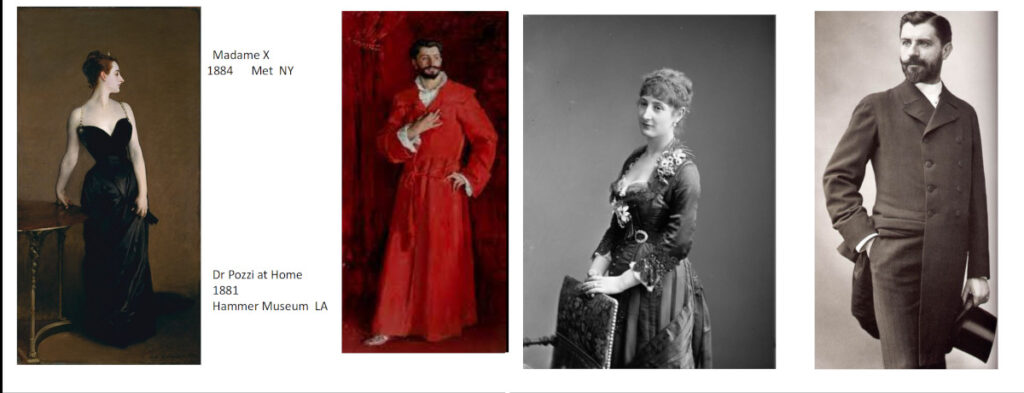
This particularly came to light with the portraits of Madame X and Doctor Pozzi at Home, both of which were examined in some detail. Jennifer was also able to show photographs of the two subjects, inviting comparison between painted portraits and photographed portraits. Sargent also had a fascination with the actress Ellen Terry and her role as Lady Macbeth. The last dated Sargent painting we saw was a file of soldiers in the First World War after a gas attack.
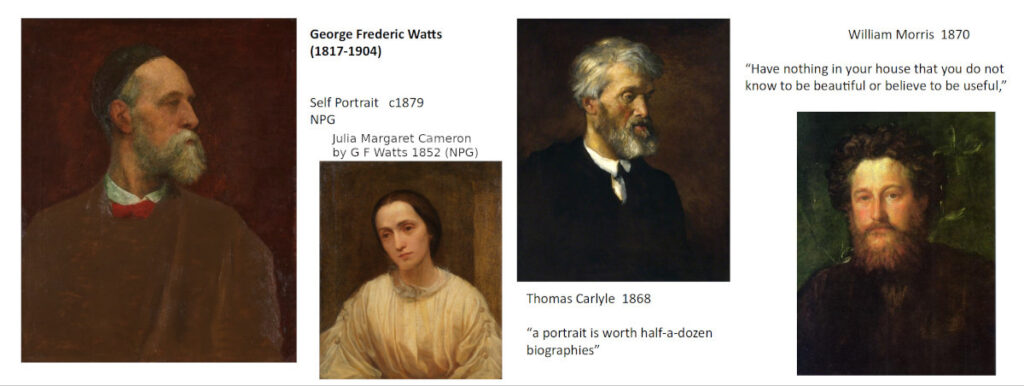
As a bonus, we were introduced to the prolific portrait painter George Frederic Watts (1817-1904) who donated many paintings to galleries, so productive were his years as an artist. Above is shown Watts (left), Margaret Cameron (one of the first photographic portraitists), Historian, Thomas Carlyle and Arts and Crafts Icon, William Morris. He also had a fascination with Ellen Terry, but their marriage did not last.
Many of Watts’s paintings are elegiac in their subjects dealing with the Poets of the day, and Watts is quoted as saying ‘I paint ideas, not things”! His subjects included “She shall be called Woman”, “Love and Life”, “Love and Death”, “Time, Death and Judgement”, “The Minotaur” and “Hope”.
Our next session will be on 23 February 2024, and will look at what can be seen in the Tate Britain Gallery.

